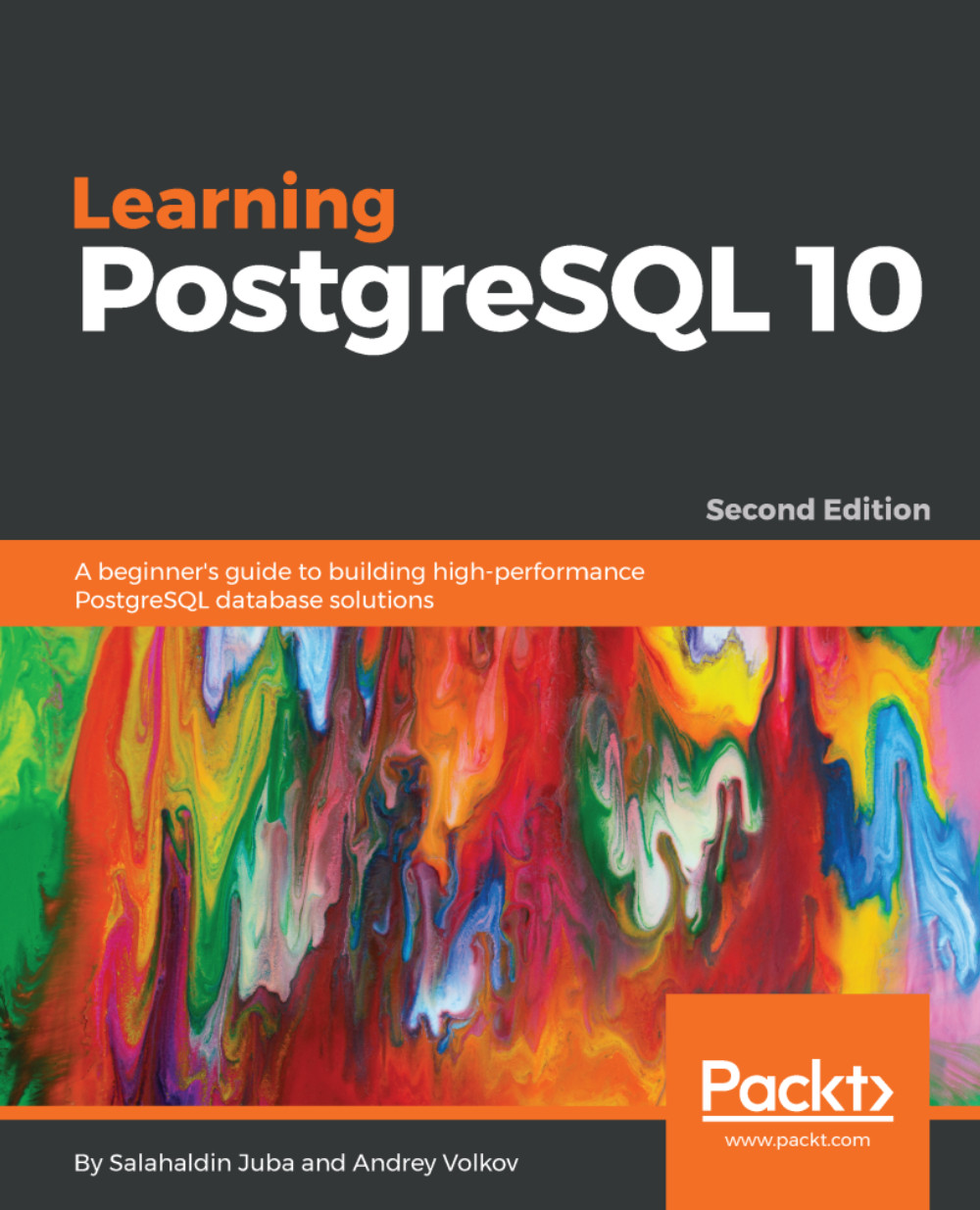The ability to write functions in PostgreSQL is an amazing feature. One can perform any task within the scope of the database server. These tasks might be related directly to data manipulation such as data aggregation and auditing, or used to perform miscellaneous services such as statistics collection, monitoring, system information acquisition, and job scheduling. In this chapter, our focus is on the PL/pgSQL language. PL/pgSQL is the default procedural language for PostgreSQL and it is full featured. As mentioned earlier, in Chapter 04, PostgreSQL Advanced Building Blocks, PL/pgSQL is installed by default in PostgreSQL.
PL/pgSQL has been influenced by the PL/SQL language, which is the Oracle stored procedural language. PL/pgSQL is a complete procedural language with rich control structures and full integration with the PostgreSQL trigger...


